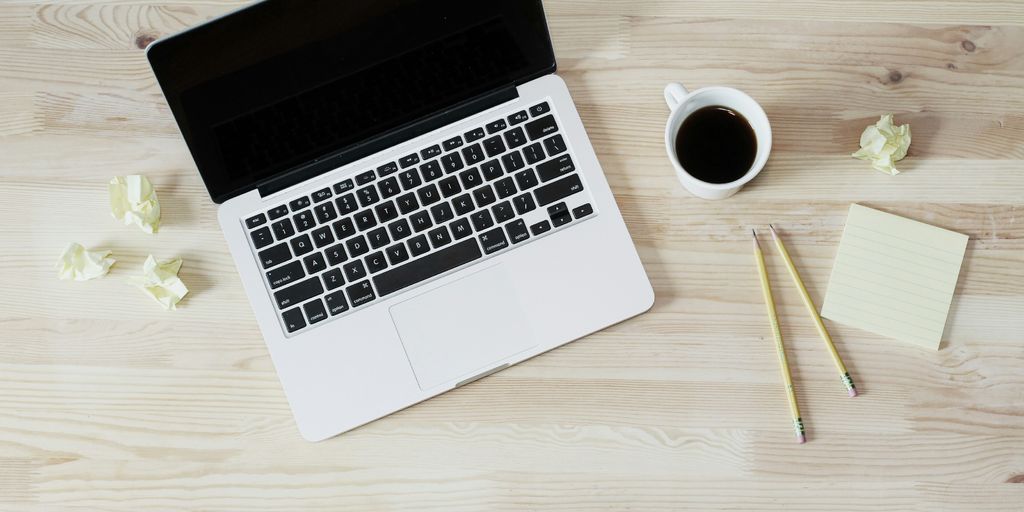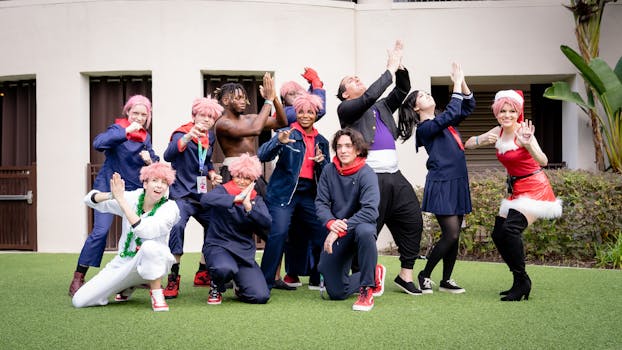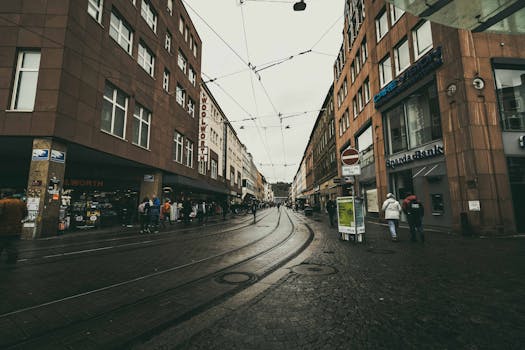
Every designer has a unique journey that starts with a simple idea and transforms into something incredible. This process can be both thrilling and challenging, filled with moments of inspiration and obstacles to overcome. In this article, we’ll explore how designers take their concepts and turn them into stunning realities, while also discussing the mindset, techniques, and tools that help them succeed.
Key Takeaways
- The creative process involves several stages, from inspiration to execution.
- Curiosity and open-mindedness are crucial for a designer’s growth.
- Prototyping and iterative methods help refine ideas into final products.
- Technology, like AI and VR, is changing how designers work.
- Feedback from users is essential for continuous improvement in design.
The Journey From Concept To Creation
Understanding the Creative Process
Okay, so you’ve got an idea. Great! But how do you actually make something from it? It’s not magic, but it can feel like it sometimes. The creative process is really about breaking down a big, scary idea into smaller, manageable steps. Think of it like this:
- Idea Generation: Brainstorming, sketching, mind-mapping – whatever gets the ideas flowing.
- Refinement: Sifting through the ideas, picking the best ones, and figuring out how they fit together.
- Development: Actually starting to build or create something, even if it’s just a rough draft.
It’s messy, it’s iterative, and it’s definitely not a straight line. But that’s what makes it fun, right?
The Role of Inspiration
Inspiration is like fuel for the creative engine. Without it, you’re just spinning your wheels. But where do you find it? Everywhere! Look around. Talk to people. Read books. Watch movies. Listen to music. The key is to be open to new experiences and to actively seek out things that spark your imagination. Don’t be afraid to steal like an artist – just make sure you transform it into something new and original.
Navigating Challenges in Design
Let’s be real: design is hard. You’re going to hit roadblocks. You’re going to have moments where you want to throw your computer out the window. It’s all part of the process. The trick is to not give up. Learn to see challenges as opportunities for growth. Ask for feedback. Prototyping is a powerful tool to test your ideas. Step away from the problem for a while and come back to it with fresh eyes. And remember, even the best designers face challenges – it’s how you overcome them that matters.
Design challenges are inevitable. Embrace them as learning experiences, seek diverse perspectives, and never underestimate the power of perseverance. It’s through these hurdles that true innovation emerges.
Cultivating a Designer’s Mindset
It’s easy to think designers are just born with some innate talent, but that’s rarely the whole story. A big part of being a good designer is about how you think. It’s about developing a specific mindset that allows you to approach problems in creative and effective ways. It’s a skill you can learn and improve.
Embracing Curiosity
Curiosity is the engine that drives design. Never stop asking "why?" Dig into the details, explore different angles, and challenge assumptions.
- Ask questions constantly.
- Explore new subjects.
- Never assume you know everything.
Curiosity isn’t just about finding answers; it’s about discovering new questions. It’s about seeing the world with fresh eyes and always seeking to understand more.
Fostering Open-Mindedness
Being open to new ideas is super important. Don’t get stuck in your ways. Be willing to consider different perspectives and approaches. Sometimes, the best solutions come from unexpected places. Consider strategic designers who are open to new ideas.
- Listen to others’ ideas.
- Be willing to change your mind.
- Don’t dismiss ideas out of hand.
Learning from Failure
Failure isn’t the end; it’s a stepping stone. Every mistake is a chance to learn and grow. Don’t be afraid to experiment and take risks, even if it means things don’t always go as planned. It’s all part of the process. Here’s a table showing how failure can lead to success:
| Failure | Lesson Learned | Improvement |
|---|---|---|
| First Prototype | User interface was confusing | Redesigned the interface for clarity |
| Marketing Campaign | Didn’t reach the target audience | Refined the messaging and targeting |
| Product Launch | Technical issues | Fixed bugs and improved performance |
Techniques for Effective Design Execution
The Importance of Prototyping
Prototyping is huge. It’s where ideas start to take shape. Think of it as building a rough draft before writing the final novel. It helps catch problems early, before you’ve invested too much time and energy. It’s not about perfection; it’s about learning and iterating. You can use paper, cardboard, or even digital tools to create these early versions. The goal is to test assumptions and gather feedback.
Iterative Design Methods
Iterative design is all about cycles. You design, test, get feedback, and then redesign. It’s a continuous loop of improvement. Each iteration brings you closer to a better solution. It’s like sculpting; you start with a block of clay and gradually refine it.
- Plan
- Do
- Check
- Act
Iterative design isn’t about getting it right the first time. It’s about learning and adapting. Embrace the process and be open to change.
Collaboration in Design Projects
Design rarely happens in a vacuum. Collaboration is key to bringing diverse perspectives and skills to the table. Working with others can spark new ideas and help you see things you might have missed. It’s about sharing knowledge and building something better together. Think of it as a team sport; everyone has a role to play. Communication is important. Make sure everyone is on the same page and understands the goals.
The Impact of Technology on Design

Technology? It’s not just changing design; it’s basically rewriting the whole playbook. Remember when designers were chained to their desks, sketching away? Yeah, those days are fading fast. Now, it’s all about how well you can dance with the digital tools at your fingertips. It’s a wild ride, but also super exciting.
Digital Tools for Designers
Okay, so the obvious one is software. But it’s not just Photoshop anymore. We’re talking about sophisticated platforms that handle everything from interface design to complex 3D modeling. These tools let designers iterate faster, collaborate more efficiently, and push the boundaries of what’s possible. It’s like having a super-powered assistant that never sleeps (or complains).
The Rise of Virtual Reality
VR isn’t just for gaming anymore. Designers are using it to create immersive experiences, prototype products in a virtual space, and even conduct user testing in realistic environments. Imagine being able to walk through a building before it’s even built, or test a product design with users from all over the world, all from the comfort of your desk. That’s the power of VR. It’s changing how we think about design, making it more experiential and user-centered.
Leveraging AI in Creative Processes
AI is the new kid on the block, and it’s already shaking things up. From generating design ideas to automating repetitive tasks, AI is helping designers work smarter, not harder. Think about it: AI can analyze massive amounts of data to identify design trends, personalize user experiences, and even create entire design systems with minimal human input. It’s not about replacing designers, but about augmenting their abilities and freeing them up to focus on the more creative aspects of their work.
The rise of AI in design isn’t about robots taking over. It’s about humans and machines working together to create better, more innovative designs. It’s a partnership, not a takeover.
Here’s a quick look at how AI is being used in design:
- Idea Generation: AI algorithms can analyze trends and generate design concepts.
- Automation: AI can automate repetitive tasks like image resizing and file conversion.
- Personalization: AI can personalize user experiences based on individual preferences.
Building a Portfolio That Stands Out
Your portfolio? It’s your design billboard. It’s gotta scream, "Hire me!" But how do you make it do that? It’s not just about slapping up every project you’ve ever touched. It’s about crafting a narrative, showing off your skills, and making a lasting impression. Think quality over quantity, always.
Showcasing Diverse Skills
Don’t be a one-trick pony. Show some range! Include projects that highlight different skills – UX, UI, branding, illustration, whatever you’ve got. Variety is the spice of a portfolio. If you’ve got a project that shows off your UX Academy graduates’ portfolios, even better. It proves you’re not afraid to learn and grow. Think about it: a potential employer wants to see that you can handle different challenges and adapt to various project requirements.
The Art of Storytelling in Design
Each project should tell a story. Don’t just show the final product. Walk the viewer through your process. What was the problem? What were your initial ideas? How did you iterate? Show your sketches, wireframes, and prototypes. Explain your design decisions. This is where you show off your thinking and problem-solving skills. It’s not just about pretty pictures; it’s about demonstrating your design process.
Networking and Professional Growth
Your portfolio isn’t just a static website; it’s a living, breathing document. Share it! Get feedback. Attend industry events. Connect with other designers. A strong network can open doors to new opportunities and help you grow as a designer.
Networking is key. Go to meetups, join online communities, and don’t be afraid to reach out to designers you admire. Your portfolio is a conversation starter, so make sure you’re ready to talk about your work and your passion for design.
Here are some ways to grow professionally:
- Take online courses to learn new skills.
- Attend workshops and conferences to stay up-to-date on industry trends.
- Contribute to open-source projects to build your portfolio and collaborate with other designers.
Transforming Ideas into Marketable Products

Identifying Target Audiences
Okay, so you’ve got this amazing idea, right? But who’s actually going to buy it? That’s where identifying your target audience comes in. It’s not enough to say "everyone." You need to get specific. Think about demographics (age, location, income), psychographics (values, interests, lifestyle), and behavior (how they shop, what they buy). Knowing your audience inside and out is the first step to making something they’ll actually want.
- Conduct market research.
- Create buyer personas.
- Analyze your competition’s customers.
Validating Concepts Through Feedback
Don’t fall in love with your idea too much. Seriously. Before you sink a ton of time and money into it, get some feedback. Show it to potential customers, ask them what they think, and listen to what they say. This can be brutal, but it’s way better to find out your idea has flaws early on. Think of it as prototype development – a chance to make it better before it hits the market.
Feedback is a gift, even when it stings. It’s your chance to refine your product and make sure it actually solves a problem for people.
Strategies for Launching Designs
So, you’ve got a killer product and you know who wants it. Now it’s time to launch! But how do you make a splash? A solid launch strategy is key. Think about your marketing channels (social media, email, ads), your pricing, and your distribution. And don’t forget the story. Why should people care about your product? What problem does it solve? A compelling narrative can make all the difference.
- Develop a marketing plan.
- Choose the right distribution channels.
- Create a buzz with pre-launch activities.
The Role of Feedback in the Design Process

Gathering User Insights
Okay, so you’ve got a design. Cool. But does anyone actually like it? That’s where gathering user insights comes in. It’s not just about asking people if they like the colors. It’s about watching them use your design and seeing where they get stuck, confused, or frustrated. Think of it as detective work. You’re trying to uncover the hidden truths about how people interact with your creation. This is where you gather valuable feedback and make necessary improvements before investing too much time and resources.
- Conduct user interviews.
- Run usability tests.
- Analyze user behavior data.
Incorporating Critiques
So, you’ve got feedback. Now what? This is where things can get tricky. It’s easy to get defensive about your work, but try to remember that critiques are meant to help you make your design better. The key is to listen actively, ask clarifying questions, and then prioritize the feedback based on its impact and feasibility. Don’t try to implement every single suggestion, but do take the time to understand the underlying issues and address them in a thoughtful way.
It’s important to remember that feedback is a gift. Even if it stings a little, it’s an opportunity to learn and grow as a designer.
Continuous Improvement Through Iteration
Design isn’t a one-and-done thing. It’s a process of continuous improvement. You get feedback, you make changes, and then you get more feedback. This iterative process is what separates good designs from great ones. Don’t be afraid to scrap ideas that aren’t working and try new things. The more you iterate, the closer you’ll get to a design that truly meets the needs of your users. Think of each iteration as a step closer to perfection. Embrace rapid prototyping to refine the user experience, resulting in a more streamlined process.
Final Thoughts on Creative Transformation
In the end, turning ideas into reality is a wild ride. It’s not just about having a great concept; it’s about the journey that follows. Designers face ups and downs, but that’s part of what makes the process exciting. They learn, adapt, and keep pushing forward, even when things get tough. Whether it’s sketching out a new design or making adjustments based on feedback, every step counts. So, if you’re looking to bring your own ideas to life, remember to embrace the messy parts. It’s all part of the creative adventure.
Frequently Asked Questions
What is the creative process like for designers?
The creative process for designers usually starts with an idea or inspiration. From there, they explore different concepts, sketch ideas, and create prototypes. It’s a journey that involves a lot of thinking and experimenting.
How do designers find inspiration?
Designers can find inspiration in many places. It might come from nature, art, music, or even conversations with others. Sometimes, just observing the world around them can spark new ideas.
What challenges do designers face?
Designers often face challenges like tight deadlines, limited resources, or creative blocks. They have to think quickly and adapt to changes to overcome these obstacles.
Why is prototyping important in design?
Prototyping is important because it helps designers test their ideas. It allows them to see what works and what doesn’t before making the final product.
How can technology help designers?
Technology provides designers with tools that make their work easier and more efficient. For example, software programs can help create designs, and virtual reality can allow designers to visualize their projects in new ways.
What should be included in a designer’s portfolio?
A designer’s portfolio should showcase a variety of their work, including different styles and projects. It’s also helpful to tell the story behind each piece, explaining the thought process and challenges faced.




